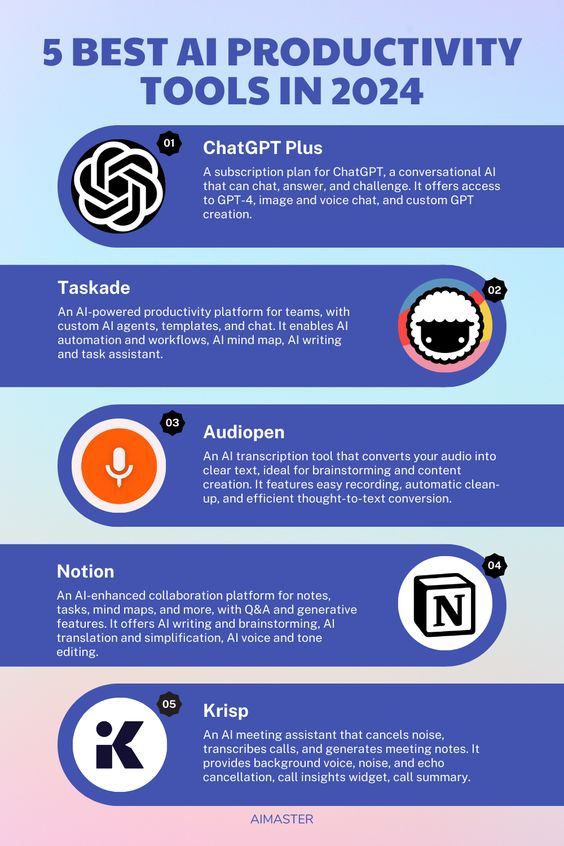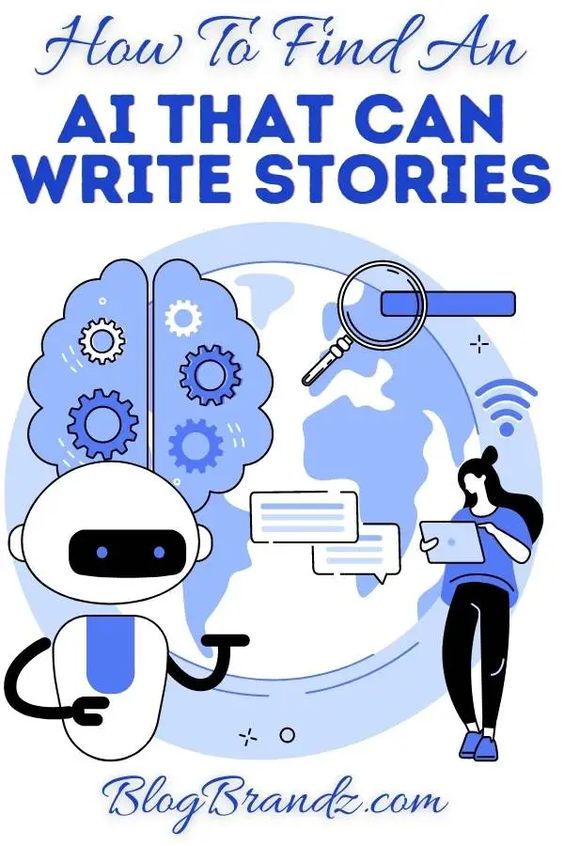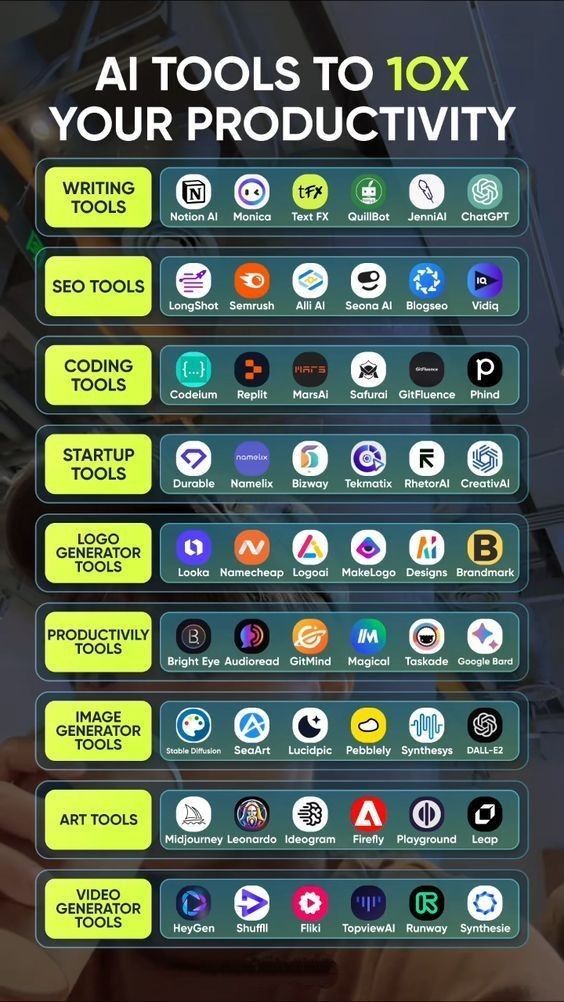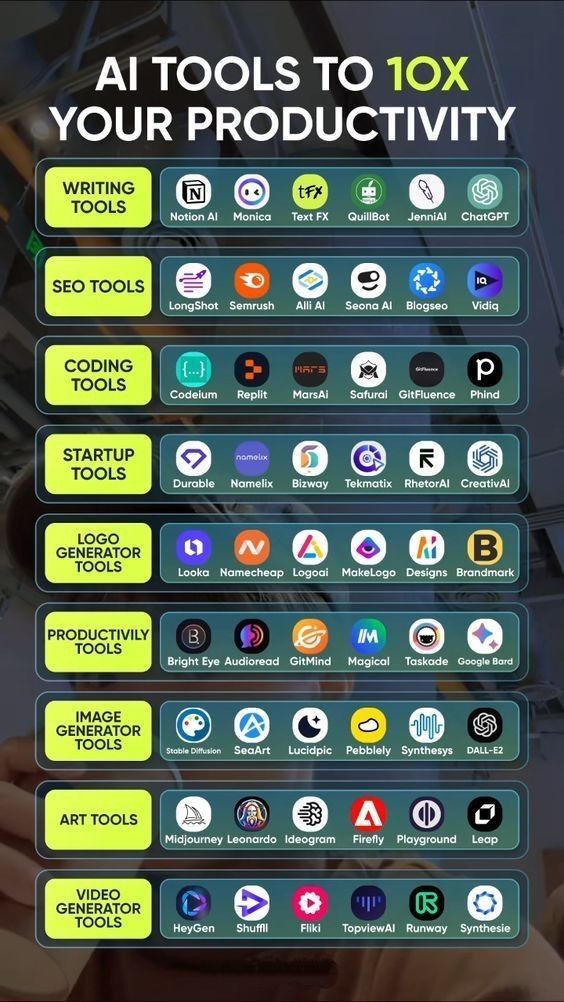Generative AI tools are revolutionizing the way we create, innovate, and solve problems across various industries. These tools leverage advanced algorithms to generate content, designs, and even ideas, opening up new possibilities in fields ranging from art to business strategy. In this article, we’ll delve into the different types of generative AI tools, their applications, and how they are shaping the future.
- What Are Generative AI Tools?
- Types of Generative AI Tools
- Applications of Generative AI Tools
- Benefits of Using Generative AI Tools
- Challenges and Ethical Considerations of Generative AI Tools
- The Future of Generative AI Tools
- How to Choose the Right Generative AI Tools for Your Needs
- Case Studies: Success Stories with Generative AI Tools
- Tips for Maximizing the Potential of Generative AI Tools
- Conclusion: Embracing the Power of Generative AI Tools
- FAQs About Generative AI Tools
- 1. What are Generative AI Tools?
- 2. How do Generative AI Tools work?
- 3. What industries can benefit from Generative AI Tools?
- 4. Are Generative AI Tools difficult to use?
- 5. Can Generative AI Tools be used for unethical purposes?
- 6. How do I choose the right Generative AI Tool for my needs?
- 7. Can Generative AI Tools replace human creativity?
- 8. What are the ethical considerations when using Generative AI Tools?
- 9. What are some popular Generative AI Tools available today?
- 10. What is the future of Generative AI Tools?
What Are Generative AI Tools?

Generative AI tools are software applications powered by artificial intelligence that can create new content, designs, or ideas based on a set of input data. Unlike traditional AI, which typically analyzes and processes data to make decisions, generative AI goes a step further by producing entirely new outputs that didn’t exist before.
Understanding the Core of Generative AI Tools
Generative AI tools use machine learning models, particularly deep learning techniques, to analyze patterns in large datasets. These models, such as Generative Adversarial Networks (GANs) and Variational Autoencoders (VAEs), are trained to generate new content that closely resembles the input data. For example, a generative AI tool trained on thousands of images can create new, realistic-looking images that are entirely unique.
How Generative AI Tools Differ from Traditional AI
While traditional AI focuses on automation and decision-making, generative AI tools are all about creativity and innovation. These tools can generate content such as text, images, music, and even complex designs, making them invaluable in creative industries. The key difference lies in the output: traditional AI replicates or classifies existing data, while generative AI creates something new.
Types of Generative AI Tools

There are various types of generative AI tools, each designed to cater to different needs and industries:
1. Text-Based Generative AI Tools
Text-based generative AI tools are designed to create written content, ranging from simple sentences to entire articles. These tools are commonly used in content creation, copywriting, and even customer service. They can generate human-like text based on a given prompt, making them useful for automating tasks such as writing emails, creating social media posts, and drafting articles.
Popular Text-Based Generative AI Tools
- GPT (Generative Pre-trained Transformer): Developed by OpenAI, GPT is one of the most well-known text-based generative AI tools.
- Copy.ai: This tool is designed specifically for marketers and content creators, helping them generate engaging copy for ads, emails, and social media.
- Jarvis.ai: Jarvis is another popular text-based generative AI tool that focuses on creating high-quality content quickly and efficiently.
2. Image-Based Generative AI Tools
Image-based generative AI tools are used to create new images or modify existing ones. These tools are widely used in graphic design, advertising, and even entertainment. They can generate realistic images, artistic designs, or even entirely new visual concepts based on input data.
Popular Image-Based Generative AI Tools
- DALL-E: Created by OpenAI, DALL-E is a generative AI tool that can create images from text descriptions. It is capable of producing highly detailed and creative visuals.
- DeepArt: This tool uses deep learning algorithms to transform photos into artwork in the style of famous artists.
- RunwayML: RunwayML provides a suite of tools for creating images, videos, and 3D models using generative AI.
3. Music-Based Generative AI Tools

Music-based generative AI tools are designed to compose music or generate sound effects. These tools are used by musicians, sound designers, and game developers to create original compositions and audio content.
Popular Music-Based Generative AI Tools
- Amper Music: Amper is a generative AI tool that allows users to create music by selecting a genre, mood, and instruments. It then generates a unique composition based on these parameters.
- AIVA (Artificial Intelligence Virtual Artist): AIVA composes classical music using deep learning algorithms. It has been used in film scoring and other creative projects.
- Jukedeck: Jukedeck generates royalty-free music for videos, podcasts, and other media projects.
4. Video-Based Generative AI Tools
Video-based generative AI tools are used to create, edit, or enhance video content. These tools are gaining popularity in the entertainment industry, where they are used to generate special effects, animate characters, and even create entire scenes.
Popular Video-Based Generative AI Tools
- Deepfake: Deepfake technology allows users to superimpose one person’s face onto another’s in a video, creating realistic but entirely synthetic content.
- Synthesia: Synthesia is a video-based generative AI tool that allows users to create videos with AI-generated avatars that can speak multiple languages.
- Pikazo: Pikazo is a tool that transforms video clips into artistic animations, offering unique visual effects for creative projects.
Applications of Generative AI Tools
Generative AI tools have a wide range of applications across various industries. Let’s explore some of the key areas where these tools are making an impact.
1. Creative Arts and Design
Generative AI tools are transforming the creative arts by enabling artists and designers to explore new styles and concepts. Whether it’s generating artwork, designing logos, or creating 3D models, these tools are pushing the boundaries of creativity.
2. Marketing and Advertising
In marketing and advertising, generative AI tools are being used to create personalized content at scale. From generating ad copy to designing visual assets, these tools help marketers deliver more targeted and effective campaigns.
3. Entertainment and Media
The entertainment industry is leveraging generative AI tools to create realistic special effects, generate music, and even develop entire virtual worlds. These tools are also being used to create personalized content for viewers, enhancing the overall entertainment experience.
4. Healthcare and Medicine
In healthcare, generative AI tools are being used to analyze medical data and generate new insights. For example, these tools can create synthetic medical images for training purposes or generate personalized treatment plans based on patient data.
5. Education and Training
Generative AI tools are also making their way into education and training, where they are used to create personalized learning experiences. These tools can generate educational content, simulate real-world scenarios, and even create virtual tutors to assist students.
Benefits of Using Generative AI Tools

The benefits of using generative AI tools are vast, and they extend across various industries.
1. Increased Creativity and Innovation
Generative AI tools enable users to explore new ideas and concepts that may not have been possible with traditional methods. By generating new content and designs, these tools foster creativity and drive innovation.
2. Time and Cost Efficiency
By automating the creation process, generative AI tools save time and reduce costs. This is particularly beneficial for businesses that need to produce large volumes of content or designs quickly.
3. Personalization and Customization
Generative AI tools allow for the creation of highly personalized and customized content. Whether it’s tailoring marketing messages to individual customers or generating unique learning experiences, these tools enhance personalization efforts.
4. Enhanced Decision-Making
Generative AI tools can generate new insights and ideas that can inform decision-making. By analyzing data and generating new possibilities, these tools help businesses and individuals make more informed choices.
Challenges and Ethical Considerations of Generative AI Tools
While generative AI tools offer numerous benefits, they also come with challenges and ethical considerations that must be addressed.
1. Intellectual Property Concerns
One of the main challenges with generative AI tools is the issue of intellectual property. Since these tools generate new content based on existing data, questions arise about the ownership and originality of the generated content.
2. Bias and Fairness
Generative AI tools can inherit biases from the data they are trained on, leading to biased or unfair outcomes. It’s essential to ensure that these tools are trained on diverse and representative datasets to minimize bias.
3. Misuse and Malicious Use
There is a risk that generative AI tools could be used for malicious purposes, such as creating deepfakes or generating fake news. It’s important to implement safeguards and ethical guidelines to prevent misuse.
4. Quality and Accuracy
The quality and accuracy of content generated by AI tools can vary, and there is a risk of producing content that is inaccurate or misleading. Users must carefully review and validate the output of these tools to ensure it meets the desired standards.
The Future of Generative AI Tools

The future of generative AI tools is promising, with continued advancements in technology expected to drive further innovation.
1. Integration with Other Technologies
Generative AI tools are likely to be integrated with other emerging technologies, such as augmented reality (AR) and virtual reality (VR). This will enable the creation of immersive and interactive experiences that blend AI-generated content with real-world environments.
2. Enhanced Collaboration Between Humans and AI
As generative AI tools become more sophisticated, we can expect to see greater collaboration between humans and AI. These tools will serve as creative partners, helping individuals and teams explore new ideas and bring their visions to life.
3. Increased Accessibility and Democratization
The democratization of generative AI tools will continue, making these powerful tools more accessible to individuals and small businesses. This will enable more people to leverage AI for creative and innovative purposes, regardless of their technical expertise.
4. Ethical and Responsible AI Development
As generative AI tools become more prevalent, the importance of ethical and responsible AI development will grow. Organizations and developers will need to establish robust ethical guidelines and practices to ensure that these tools are used for positive and constructive purposes. This includes addressing issues related to bias, transparency, and accountability, as well as ensuring that AI-generated content aligns with societal values.
5. Continuous Improvement in AI Models
The underlying models powering generative AI tools, such as GANs and VAEs, will continue to evolve, leading to more sophisticated and capable tools. Researchers are constantly working on improving these models to generate higher-quality outputs, reduce biases, and increase the diversity of generated content. This will result in even more powerful and versatile generative AI tools in the future.
6. Expansion into New Industries
While generative AI tools are already making an impact in industries like entertainment, marketing, and design, their application will likely expand into new areas. Sectors such as finance, legal services, and public policy could see innovative uses of generative AI tools to solve complex problems, automate processes, and generate insights that were previously unattainable.
How to Choose the Right Generative AI Tools for Your Needs
With the growing number of generative AI tools available, selecting the right one for your needs can be challenging. Here are some tips to help you make an informed decision:
1. Define Your Objectives
Before choosing a generative AI tool, it’s essential to clearly define your objectives. What do you want to achieve with the tool? Are you looking to generate content, create designs, or explore new ideas? Understanding your goals will help you narrow down your options and choose a tool that aligns with your needs.
2. Evaluate the Tool’s Capabilities
Different generative AI tools have different strengths and capabilities. For example, some tools excel at generating text, while others are better suited for creating images or music. Evaluate the tool’s features, output quality, and customization options to ensure it meets your specific requirements.
3. Consider Ease of Use
The ease of use is an important factor, especially if you or your team are not AI experts. Look for tools that offer user-friendly interfaces, clear documentation, and support resources. Some tools also offer drag-and-drop functionality or pre-built templates to simplify the creation process.
4. Review Pricing and Licensing
Generative AI tools come with various pricing models, ranging from free versions to subscription-based plans. Consider your budget and the tool’s pricing structure, including any additional costs for premium features or commercial use. It’s also important to review the licensing terms to ensure you can use the generated content as intended.
5. Check for Integration and Compatibility
If you plan to use the generative AI tool alongside other software or platforms, check for integration and compatibility. Some tools offer APIs or plugins that allow seamless integration with other applications, such as content management systems (CMS), design software, or marketing platforms.
6. Test the Tool with a Trial Version
Many generative AI tools offer trial versions or free tiers that allow you to test the tool before committing to a purchase. Take advantage of these options to experiment with the tool and assess its performance, output quality, and usability.
Case Studies: Success Stories with Generative AI Tools
To illustrate the real-world impact of generative AI tools, let’s look at a few case studies where these tools have been successfully implemented.
1. Transforming Marketing Campaigns with GPT-3
A digital marketing agency wanted to create personalized ad copy for a large-scale campaign targeting multiple demographics. By using GPT-3, one of the most advanced text-based generative AI tools, the agency was able to generate tailored ad copy that resonated with different audience segments. The result was a significant increase in engagement and conversion rates, demonstrating the power of generative AI in marketing.
2. Enhancing Creative Workflows with DALL-E
A design studio leveraged DALL-E, an image-based generative AI tool, to create unique visual concepts for a client’s branding project. The tool generated a series of images based on the client’s brief, providing the designers with a diverse set of ideas to work with. This accelerated the creative process and resulted in a final design that exceeded the client’s expectations.
3. Composing Music for Film with AIVA
A film production company used AIVA, a music-based generative AI tool, to compose the score for an independent movie. The tool generated original compositions that matched the film’s tone and mood, allowing the filmmakers to create a high-quality soundtrack without the need for a full-time composer. The film received praise for its music, highlighting the potential of generative AI in the entertainment industry.
Tips for Maximizing the Potential of Generative AI Tools
To get the most out of generative AI tools, consider the following tips:
1. Experiment with Different Tools and Models
Generative AI tools vary in their capabilities and outputs, so it’s worth experimenting with different tools and models to find the ones that best suit your needs. Try combining multiple tools to leverage their strengths and create more sophisticated results.
2. Provide Clear and Specific Input Data
The quality of the output generated by AI tools largely depends on the input data. Provide clear, specific, and relevant data or prompts to guide the AI in generating the desired content. The more accurate and detailed your input, the better the results.
3. Iterate and Refine the Output
Don’t settle for the first result generated by the AI tool. Use an iterative process to refine and improve the output. Many generative AI tools allow you to tweak parameters, adjust settings, or regenerate content until you achieve the desired outcome.
4. Combine Human Creativity with AI Capabilities
Generative AI tools are most effective when used in conjunction with human creativity. Use the AI-generated content as a starting point or inspiration, and then apply your own creative touch to enhance and refine the results. This collaborative approach can lead to truly innovative and unique outcomes.
5. Stay Informed About New Developments
The field of generative AI is rapidly evolving, with new tools and advancements emerging regularly. Stay informed about the latest developments, trends, and best practices to ensure you’re using the most up-to-date and effective tools available.
Conclusion: Embracing the Power of Generative AI Tools
Generative AI tools are transforming industries by enabling new levels of creativity, innovation, and efficiency. From generating content and designs to composing music and creating videos, these tools offer a wide range of applications that can benefit businesses and individuals alike.
By understanding the different types of generative AI tools, their applications, and how to choose the right tool for your needs, you can harness the power of AI to enhance your work and achieve your goals. As the technology continues to advance, the possibilities for generative AI tools are virtually limitless, making them an essential part of the future of creativity and innovation.
FAQs About Generative AI Tools
1. What are Generative AI Tools?
Generative AI tools are software applications that use artificial intelligence to create new content, designs, or ideas based on input data. These tools can generate text, images, music, videos, and more, making them valuable in various creative and industrial applications.
2. How do Generative AI Tools work?
Generative AI tools work by using machine learning models, such as Generative Adversarial Networks (GANs) or Variational Autoencoders (VAEs), to analyze patterns in large datasets. These models are trained to produce new, unique outputs that resemble the input data, allowing the AI to generate content that didn’t exist before.
3. What industries can benefit from Generative AI Tools?
Generative AI tools are beneficial across many industries, including marketing, entertainment, design, healthcare, education, and more. They are used to create personalized content, enhance creative workflows, develop innovative products, and improve decision-making processes.
4. Are Generative AI Tools difficult to use?
The ease of use varies depending on the tool. Some generative AI tools are designed with user-friendly interfaces and require no technical expertise, while others may require some knowledge of AI and machine learning. Many tools also offer tutorials, documentation, and support to help users get started.
5. Can Generative AI Tools be used for unethical purposes?
Yes, like any technology, generative AI tools can be misused for unethical purposes, such as creating deepfakes, spreading misinformation, or generating biased content. It’s important for developers and users to follow ethical guidelines and implement safeguards to prevent misuse.
6. How do I choose the right Generative AI Tool for my needs?
To choose the right generative AI tool, consider your specific objectives, the tool’s capabilities, ease of use, pricing, and compatibility with other software. Testing the tool with a trial version can also help you determine if it meets your requirements.
7. Can Generative AI Tools replace human creativity?
Generative AI tools are not a replacement for human creativity but rather a complement to it. These tools can assist in generating ideas, content, and designs, but the final output often benefits from human input, refinement, and creativity.
8. What are the ethical considerations when using Generative AI Tools?
When using generative AI tools, it’s essential to consider issues related to intellectual property, bias, fairness, and the potential for misuse. Developers and users should prioritize ethical practices, transparency, and accountability to ensure responsible use of AI-generated content.
9. What are some popular Generative AI Tools available today?
Some popular generative AI tools include GPT for text generation, DALL-E for image creation, AIVA for music composition, and Deepfake for video manipulation. Each tool is designed for specific applications, and new tools continue to emerge as the technology evolves.
10. What is the future of Generative AI Tools?
The future of generative AI tools is bright, with ongoing advancements in AI models, increased accessibility, and integration with other technologies like augmented reality (AR) and virtual reality (VR). These developments will likely expand the use cases and capabilities of generative AI tools, making them even more valuable in various fields.
FOR NEXT POST CLICK HERE





[…] FOR NEXT POST CLICK HERE […]